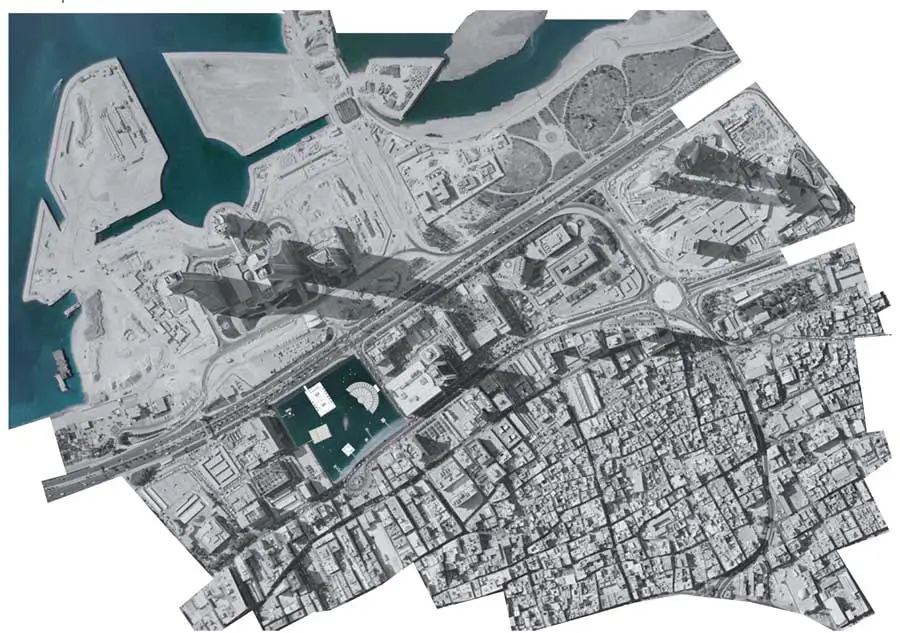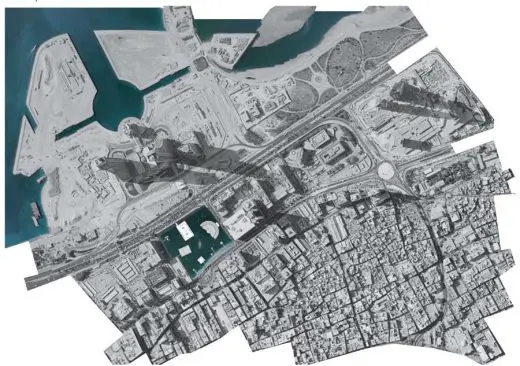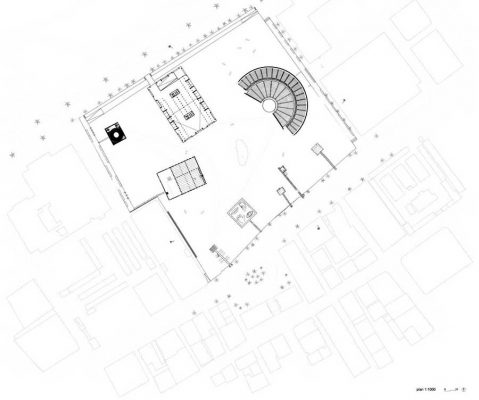Bab Al Bahrain Square Competition, Winners, News, Architects
Bab el Bahrain Competition : Manama Design Contest
Persian Gulf Architectural Contest, in the Middle East, western Asia
22 Feb 2012
Bab Al Bahrain Square Competition Winners
1st Prize: Pearl Dive
Lukas Lenherr, Switzerland
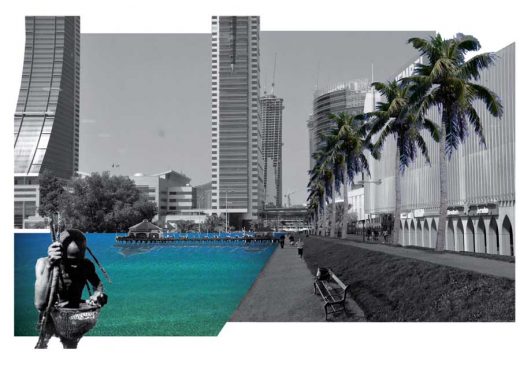
pictures from contest organiser
Bab el Bahrain Competition Designs
The void. A physically powerful identity and a strong sense of a space are given to a place when it contains a clear void. It is the void that connects people. Furthermore it is the void that re-animates the historical link to the sea. It is this void that re-locate things as they were in past times. This void, the heart of the project, is a vast open space of water. Its size makes up the entire competition perimeter. The excavated soil can be used for new offshore landfill.
That void is accessible through divers activities like renting boats for sailing, paddling or artificial pearl diving. A tall water fountain (a present from the City of Geneva) is installed in the middle of the water to mark a centre of peace, a strong statement and maybe a reference to the pearl roundabout? A continuing promenade around the water invites people to enjoy this place. The promenade offers a variety of benches, gradients, stairs, ramps and also access to the water. Overall shadow is created with palm trees.
At the same time clear elements are animating the void and create large and small pocket spaces. These elements and their identity are symbolised programs that offer activities to a contemporary Arab society. The demanded programs of the competition have additional essential programs. This creates a fresh mix of new spaces which can react to diverse situations of an urban cosmopolitan place.
These elements and their obvious character of the famous fisherman’s huts are taken as reference to the historical use of the seafront, and at the same time, the water surface indicates the old seafront. However, it is not only a hint to the historical past but also one to the actual situation in- and offshore. Nevertheless, these new huts should not be seen poorly maintained and cheap; they all have a brand new and inventive design, incorporating the local Bahraini identity.
Some huts along the new beachfront offer light commercials and leisure’s activities. They offer space for a coffee, tea and scrabble; they offer a place for renting-boats and pearl–dive trips within the void; they offer information space and a bicycle rent as alternative circulation system through old town and around the void.
The new Children’s Museum is positioned on the same side of the new beach. The water access is quieter and smoother and at the same time it is opposite to the busy King Faisal Highway.
Along the King Faisal Highway, a carPark building is placed with a drive-in cinema on its roof. The building itself is considered to be a multiuse building that can be transformed into offices or apartments; a multiuse building in order to reflect the fast changing economical world. For now it is a generic proposal of a parking building with inclined slabs that control the circulation and the building’s façade.
Near the carPark and the noisy King Faisal Highway there is the little music hut. It creates a platform for pearl singers to perform Fijiri and as well for rock music and disco. Traditional music shall be in confrontation with new time music. This collaboration creates potential for traditional music to get rediscovered and to give a chance to adapt itself to modern times. Fijiri, as important historical part, should not get forgotten.
On the right hand side of the music hut there is the new post office, supplemented with a mosque. It is a place of communication in all its expressions with the world and more.
The new National Archive is positioned opposite to the post office and incorporates at the same time a great open-air theatre that can be covered. It is understand that the entire archived arte-facts and achievements can be shown and presented to a national and international audience. It is the National Archive itself that gets activated and offering education and advertisements programs.
Life in and around the PEARL DIVE will be for old and young. It will offer places and spaces for sitting, lying, having a pick-nick, playing chess or backgammon, gathering, speaking, arguing, twittering, mailing, educating, learning, breathing, seeing, observing, smelling, hiding, kissing, celebrating, crying, listening, presenting, enjoying, dancing, laughing, running, performing, exploring, discovering… It is a certain re-location of historical moments; a certain re-dive into the past and a hint to the fast ongoing land reclamation. It is Rome’s Fontana di Trevi for Manama, a new Tree of Life, and it will activate all adjoining neighbourhoods together with the old city of Manama and its historical Bab Al Bahrain.
2nd Prize: Two Rooms
Baukuh and Guido Tesio, Italy
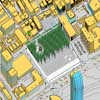
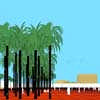
pictures from contest organiser
As of today, the Bab Al Barhain square is not a square: it is a series of parking lots surrounded by major traffic roads. This condition needs to be understood as an opportunity, not as a want.
Bab Al Bahrain lies in between the market to the south and the Bahrain Financial Harbor to the north. The hollowness of the site and its strategic location suggests a possible urbanity. The Bab Al Barhain area is an urban void waiting for aggressive metropolitan appropriation. Its emptiness is ready to host metropolitan activities. A new design simply needs to protect the emptiness and let it blossom.
The Bab Al Barhain square has no program, no content. Its complete programmatic indeterminacy allows a multitude of uses to take place in the square. Bab Al Barhain just needs a precise definition of its borders to allow a complex metropolitan program to appear. Formal precision will allow for free appropriation of space.
Two new open air rooms appears at Bab Al Barhain, following the geography of the context: a large room to the north and a smaller one to the south.
The two rooms are defined by a 10 m high wall following the perimeter of the competition site. The two rooms offer different conditions and dimensions: a huge open air venue for public events and festivals, a forest of palm trees, a smaller square fitting to the historical part of the city. This set of spaces is entirely public and deliberately monumental. As in a Roman Forum the external wall allows for the easy incorporation of subsidiary elements with different programs and the insertion of a multitude of “exceptions” that provide the rooms with a lively atmosphere.
As interior spaces the two rooms will grow accumulating the traces of the life of their visitors. The simplicity of the spaces and the purity of the walls will be transformed in time by everyday rituals, both private and public, old and new.
3rd Prize: New Times Square
Partizan Publik- Dus Architects, The Netherlands
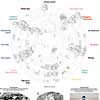
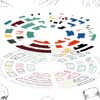
pictures from contest organiser
Bab al Bahrain’s restored worldliness
The TV series Arab Idols and, more recently, the Arab Spring show the activation of a silent majority of people. Through Facebook-ing, Twitter-ing and sms-ing an identity in the Gulf region is claimed and new symbolism is produced. Thus through the intermediation of social media there’s a new sense of public-ness, also in Bahrein.
In the past, through its connection to the sea, the Bab al Bahrain square was a worldly, an open and a commercial place. But now it’s landlocked, facing inward, and as such the global influences are lost. The contemporary Bab Al Bahrain square is merely the domain of the car. Our design restores the connection to the outside world as the square is programmed through social media.
By means of online chatting, twittering or sms–ing visitors of the square are invited to make the space into something of their own. An online time and space program facilitates the individual’s public desires. In a poetic way the identity of the square is re-designed. Through play, participation and, perhaps, sometimes resistance, citizens give shape to the symbolic environment of the Bab Al Bahrain square in bottom – up way. Celebrating new times of cultural globalization.
Bab Al Bahrain square Architecture Competition – Other Entries
Bab el Bahrain competition entry by Studio DuB, Scotland, received 11 Jul 2012:
“the main move of the Plaza lifting up and folding over the new build elements…an inhabited ‘Wave'”
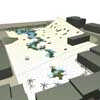
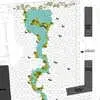
pictures from entrant
Bab el Bahrain competition entry by Ahmed El maghraby, Egypt, received 21 Feb 2012:
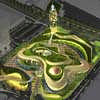
picture from entrant
Bab al Bahrain competition entry by Ahmed Hazem, Ahmed Hendawy, Mohamed Hegazy, Mohamed El Shawadfy, received 21 Feb 2012:
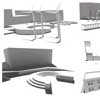
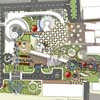
pictures from entrant
Bahrain Architecture Design Contest
On the occasion of Manama: Capital of Culture of the Arab World 2012, the Ministry of Culture of the Kingdom of Bahrain is organising an international open ideas competition for the redesign of the Bab Al Bahrain square.
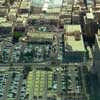
picture from Architecture Competition organisers
The square holds the potential of becoming one of the most representative and significant public spaces in the Island due to its central location, although it is currently little more than an accumulation of surface parking areas.
Bab Al Bahrain square in 1950:
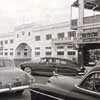
picture from Architecture Competition organisers
Deadline for submissions for this Bahrain square Architecture Competition is 1st of February 2012: www.moc.gov.bh/en/babcompetition
Location: Bahrain
Architecture in Bahrain
Contemporary Bahraini Architectural Projects
Bahrain Architecture Designs – chronological list
Bahrain Buildings – Selection
Four Seasons Hotel Bahrain
SOM – Skidmore, Owings and Merrill
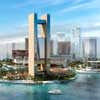
image from architects
Four Seasons Hotel Bahrain
Bahrain World Trade Center – Twin skyscrapers, Manama
Architects: Atkins

image from Atkins
Bahrain World Trade Center
Durrat Al Bahrain
Architects: Atkins
Durrat Al Bahrain
Nomas Towers, Juffair
Architects: Atkins
Nomas Towers Bahrain
Dubai Buildings – current buildings + designs
Bahrain Pavilion, Venice – Golden Lion winner for Best National Pavilion, 2010
Bahrain Pavilion
Bahrain World Trade Center Wind Turbines
Comments / photos for the Bab el Bahrain Square Competition page welcome

